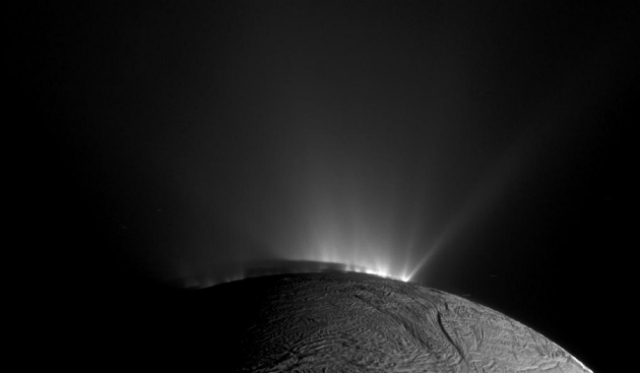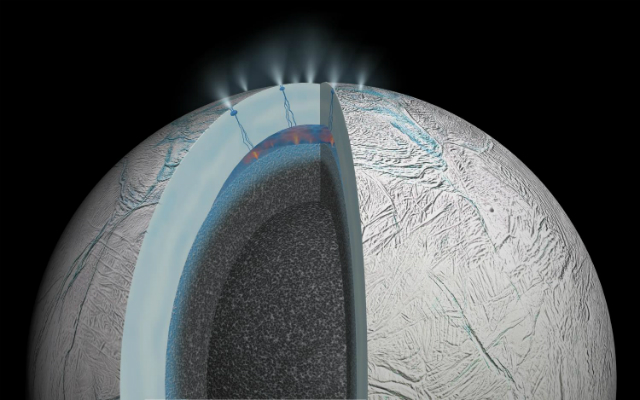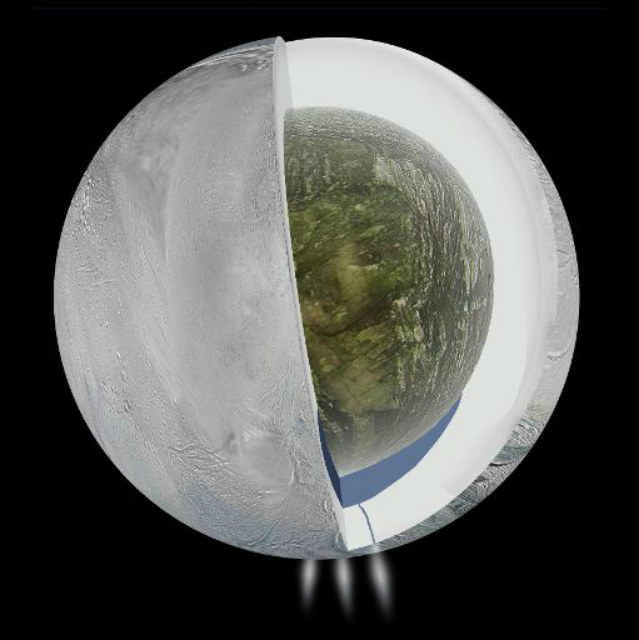A new study conducted by scientists of the mission Cassini and the University of Colorado in Boulder, showed microscopic granules of rocks found near Saturn indicate hydrothermal activity flowing inside the satellite Enceladus planet.
These granules were the first confirmation of the theory of hydrothermal activity in the moon. As you know, the satellite was also found several geysers. All this may be indicative of the simplest living organisms on Enceladus.
The new findings preceded by a painstaking analysis of the mission “Cassini”, which lasted for about four years. While it researchers have resorted to as computer simulations and experiments in laboratory. According to scientists, to form granules indicates that hot water containing dissolved minerals from the interior of the satellite, ejected upward by contact with cooler streams. The temperature required for the interaction, in which form such a tiny stone granules, must be at least 90 degrees Celsius.

“We can use these grains of rocks thrown into space geysers to learn more about the conditions of the internal structure of the icy moon,” – says one of the study’s authors Sian Su Wen (Hsiang-Wen Hsu).
Space dust from fine granules, silica-rich, since 2004 repeatedly detected tool “cosmic dust analyzer” (Cosmic Dust Analyzer). She reaches the E ring of Saturn. By process of elimination, scientists have come to the conclusion that these particles should be granules of silica, which on Earth can be found in the sand and mineral quartz.
The fact that the granules was about the same size (from 4 to 16 nanometers ) – a sign that their release of a specific process responsible. They might not be the result of, for example, a collision of asteroids.
On Earth, the most common method of forming silica granules of this size is a hydrothermal activity with a certain set of conditions (alkaline water with low salinity, supersaturated with silica, as well as a sharp and a significant drop in temperature). The search for an alternative explanation of the emergence of silica in space have failed.

The American experts have worked closely with colleagues from the University of Tokyo, who conducted detailed laboratory experiments have confirmed the hypothesis that as a result of hydrothermal activity Enceladus. The Japanese team led by Yasuhito Sekine (Yasuhito Sekine) tested the conditions under which can be formed by granules of a size that the device found “Cassini”.
Researchers believe that such conditions may exist in the under-ice ocean Enceladus, which is at the bottom of the hot water from the bowels of the satellite is relatively cold ocean water.
“For the first time, these granules were detected unusual vehicle” Cassini “almost immediately, as he slumped to Saturn, that is, in 2004 – says one of the study participants physicist Alexander Kempf (Sascha Kempf) . – Ten years remained a mystery why these nanogranuly consist of silica instead of water ice. Now we know that in the observations there was no error, we know where could take these particles of silica. In this study, we really came to a rather unusual results “.
The extremely small size of the silica particles indicates that, most likely, because of their geothermal origin are sufficiently rapidly to the surface, where the fall in the already well-known geysers of Enceladus. There they are thrown and scattered on the surrounding area. The distance from the bottom of the ocean to outer space is about 50 kilometers away, and the seeds is carried out in ways ranging from several months to several years.
 >
>
The study’s authors believe that their findings plus the already available data indicate that the rocky core of Enceladus is quite porous, allowing water to seep out of the ocean inside. That is a huge area on the surface occurs interaction of rock and water. It is possible that most of the unusual chemical reactions taking place somewhere deep in the core of the satellite.
The very existence of hydrothermal activity on Enceladus, perhaps not so surprising. But it increases the chances of the likely habitability of a celestial body. In addition, the constant hydrothermal activity at the moment is found exclusively in the world.
The scientific article on Enceladus was published in Nature.
No comments:
Post a Comment